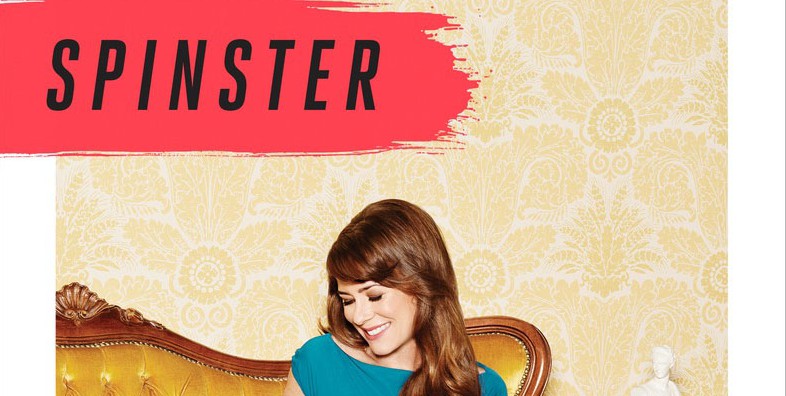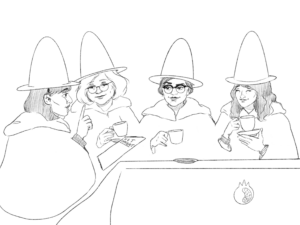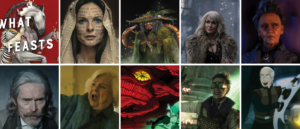You know what’s a great way to grab my attention? Title your book Spinster and feed me cover copy about women shifting away from marriage. Throw in some chapters that focus on Edna St. Vincent Millay, my latest obsession, and I’m hooked. As a proud graduate from a women’s college, I live for books like this that promise to explore lifestyles outside of the traditional nuclear family. I want to hear about strong women who decided that staying true to their principles meant more than conforming to society’s expectations.
But you know what’s a great way to lose my attention? Include only white women from New England, maintain a mostly comfortably middle class perspective, and pepper the whole thing with your own frankly not-that-interesting relationship history, which was the case with Kate Bolick’s Spinster: Making a Life of One’s Own. In between detailing her own narrative, she explores the lives of Edna St. Vincent Millay (poet), Neith Boyce (columnist), Maeve Brennan (essayist), Edith Wharton (novelist), and Charlotte Perkins Gilman (feminist advocate and writer). She calls these women her “awakeners,” finding certain aspects of their lives compelling and directly affecting her own perspective.
These women were not chosen at random, but by the fact that certain points of their lives overlap with Bolick’s in such a way as to expose specific commonalities—opinions on relationships, ideas about marriage, their feelings about the importance of one’s independence, and so on. To Bolick’s credit, she does acknowledge the painfully white nature of her “secret coven” of spinsters, as she calls them, but that might be one of the only points I’m willing to give her credit for. To be quite clear, all five of these women are daring, strong willed, and fiercely independent. Yes, they all married—some just very briefly—but that never defined them nor limited them. They are, for the most part, fine awakeners, albeit all coming from a similar mold.
Lack of diversity aside, it’s difficult for me to understand how Bolick determined that women of the past who endured entirely different circumstances and expectations could provide more guidance than her contemporaries. Juxtaposing the troubles of the twenty-first century with dilemmas of previous generations reveals how some struggles have remained the same—namely, the pressure on women to marry and have children—but it also reveals how our reactions to these expectations have in many ways become incredibly privileged. By looking at how Bolick examines each of these women, it’s even more clear how her superficial perspective misses so much about who these women really were by using them as props against her own personal narrative.
Maeve Brennan
To start us off: Maeve Brennan. Bolick finds Maeve’s picture in The New Yorker and is struck by a physical resemblance, thinking that she represented “the spinster wish made manifest.” Yikes.
Bolick is more inclined inclined to “languish in the knowledge that [she] was seeing the park as Maeve had in 1960” than give any real thought about how Maeve’s life unfolded. There’s something almost All About Eve-esque in the way Bolick daydreams about Maeve: “When I cinched my coat against the cold, I imagined my passing shadow as hers. I wore her point of view like a pair of borrowed glasses.”
Yes, that sounds healthy.
Neith Boyce
But if Maeve Brennan ignites Bolick’s latent spinster desires, Neith Boyce tempers her expectations and gives her vision some depth. Neith offers Bolick the chance to unravel the complexities and connections between an “I never shall be an old maid, because I have elected to be a Girl Bachelor” perspective, and the perspective of someone who decides to enter a marriage “completely egalitarian, as well as ‘tentative’ and not ‘till death did them part.’” Of course, this lesson is overshadowed by the fact that once again, Bolick has gravitated toward someone who feels familiar: “Like me, she’d moved to New York City from Boston in her twenties. Like me, she wasn’t radical, but she was clearly independent and strong.”
Neith, in Bolick’s writing, comes across more as a wish-fulfillment figure writ large than as someone who Bolick claims opens the gates for her to “think critically about marriage, and actually establish a life of [her] own.”
Edna St. Vincent Millay
Now, my favorite, Edna St. Vincent Millay—what a firecracker. (I highly recommend you check out Nancy Milford’s biography of Edna, Savage Beauty.) Bolick positions Edna as her sexual guru (of sorts) during her early single years. Unfortunately, Bolick places her emphasis more on Edna’s varied sexual history and less on how it played into facilitating Edna’s—and thus Bolick’s own—independence, as though sex alone makes Edna stand out.
She acknowledges that “crucial to Edna’s autonomy was honesty” and “her insistent truthfulness was just as radical as her sexual adventuring, possibly even more so,” but Bolick then falls into her tendency to overlay past with present without compensating for inflation. Comparing her society to Edna’s, Bolick makes a bizarre claim that we’re currently “in a world that still takes for granted that ‘respectable’ people either repress their emotions or flat-out lie about them,” and then goes on to posit that “what was called ‘free love’ then is merely a lot like the ‘casual sex’ of our day,” which is a statement I find baffling on so many levels. Ignoring that Edna was a contemporary of the 1920s and 1930s and the free love movement didn’t really kick off until the 1960s, framing Edna through a lens of “free love” is a weird choice. I’d also argue that free love and casual sex have very different connotations, both on a physical and emotional level, and neither of those terms could ever be applied to Edna St. Vincent Millay. She may have had many partners and she may not have stayed with them long, but Edna was never casual about her affections and she was incredibly discerning about who she spent time with. It’s a shame that Bolick somehow missed that.
Edith Wharton
Next in line is Edith Wharton, who took control of her environment to make domesticity work for her. Bolick argues that “she redefined her relationship to the home and, along with it, ours.” To a certain extent, that’s true. Edith did construct public and private rooms in her house in her “executive suite,” as we all would if we had enough money and space. But Edith had the means to spend hours of her day in solitude, writing seriously and thoughtfully. The majority of us don’t have that luxury. Finding balance—at work, in one’s personal life, and so on—is important, especially when trying to satisfy one’s personal needs. It’s frustrating that while Edith gives meaningful advice, which Bolick applies to her own life, they both makes certain assumptions about their readers: that the reader has a lifestyle that allows them to easily create and maintain a private, dedicated space. Bolick certainly has that lifestyle, but who’s to say all of her readers do as well?
Charlotte Perkins Gilman
Finally, we come to Charlotte Perkins Gilman, author of the “The Yellow Wallpaper” and Bolick’s final awakener. Bolicks praises Charlotte’s “ability to think clearly and deliberately about each stage of her life,” but more than anything, I think Charlotte’s journey from staunchly dismissing marriage to happily marrying—while still remaining true to her own principles—reminds Bolick that relationships are not black and white, that life is not black and white. You can be determined to know yourself as “a self [. . .] not merely as a woman, or that useful animal a wife or mother,” and not necessarily take a hard line against marriage. Perhaps at this point Bolick has grown weary of looking for herself explicitly in the lives of her coven, because she approaches Charlotte with an awareness that whatever lesson she learns from her is more advice and less prescription.
Times change. People change. Society is breaking open binaries—single/married, man/woman—to find new ways to live. Bolick announces this realization with little fanfare, but it feels like it comes too late.
I picked up Spinster hoping to read about sisterhood, about finding a fulfilling life outside of marriage, maybe even about the changing role of women in society. But for a book that supposedly is about Bolick exploring what she wants from life by researching the lives of five “spinster” women, Spinster feels very shallow and unmoored.
Wading through the many rhetorical questions—What am I doing? Do I really want to break up with this fantastic man? What is wrong with me?—Bolick’s journey feels more like a vanity project and less like something women can take to heart. She spends a lot of time being vaguely startled by touching points (Edna St. Vincent Millay had a house in Bolick’s hometown! Maeve Brennan went to the same artists’ colony!) between the lives of her five awakeners and her own, but not in any truly productive way. The narratives of her role models feel pasted against her own life, a sloppy pastiche you’d expect from a high school project. There are a few moments of clarity, when it seems as though Bolick is on the verge of making a salient point about societal expectations and the quiet ways women buck tradition, but then the moment passes, unrealized.
More than halfway through Spinster, Bolick notes, “When I’d first arrived in New York, I’d been shocked to discover that The Atlantic Monthly wasn’t a demographic anomaly—the publishing industry is overwhelmingly white, upper middle class, and Ivy League.” A statement like that, with a full two hundred pages preceding it detailing Bolick’s white middle-class existence, is hard to swallow, much less find believable, but in that single observation, Bolick could very well be describing Spinster itself.
Bolick, Kate (2015-04-21). Spinster: Making a Life of One’s Own. Crown/Archetype. Kindle Edition.










